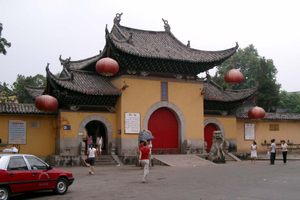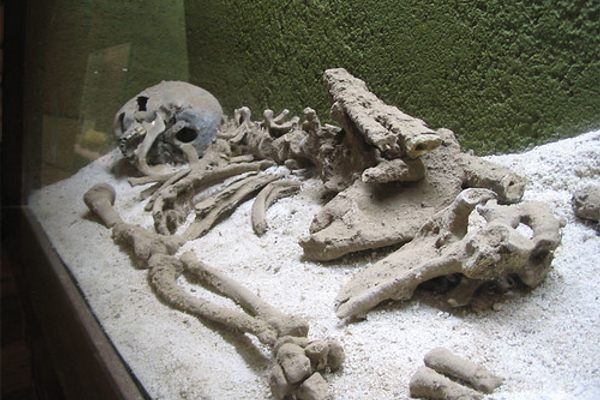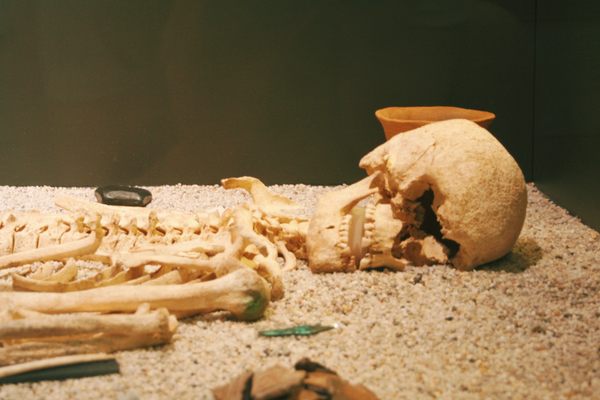About
In 1965, an archaeological team discovered a series of ancient tombs along an aqueduct of the Zhang River Reservoir in Jingzhou, China. They discovered more than 2,000 artifacts, but none were more impressive or surprising than the Sword of Goujian.
The archaeologists found the sword lying next to a human skeleton in a water-damaged casket. The whole tomb was sodden, having been soaked in underground water for more than a thousand years. So when the team unsheathed the sword from its wooden scabbard, no one was expecting to see such a pristine artifact.
The scabbard, with its black-lacquer finish, provided an almost airtight fit around the ancient sword. Thanks to this and the chemical composition of the sword, the magnificent blade was almost untarnished and retained an impressively sharp edge (the edge has frequently been described as “razor sharp,” but that could well be an exaggeration; the Hubei Department of Culture described the blade as easily cutting through “20 pieces of hard paper”).
The state of preservation was made all the more impressive when the sword was dated to the Spring and Autumn period of Chinese history, which ran approximately from 771 to 403 BC. That meant that the blade was around 2,500 years old, and placed it in a period of epic Chinese heroes, many of whom have taken on an almost mythical status in Chinese culture.
The sword has a total length of 22 inches (55.6 centimeters), with a 3.3-inch (8.4-centimeter) hilt. The exquisitely forged blade was made primarily of copper, but the edges have a higher tin content, making them harder and able to keep a sharper edge. Both sides of the blade are decorated with a repeating rhombi pattern, their dark lines standing out from the sword’s overall golden hue. The guard, meanwhile, is inlaid with blue crystals and turquoise.
On one side of the blade are eight characters engraved in what is known as bird-worm seal script. Six of these ancient characters have been deciphered. The script reads: “King of Yue” and “made this sword for [his] personal use.” The other two characters could not be identified, but analysts believe that they state the name of the aforementioned King of Yue.
These intriguing details provoked much debate as to the owner of the sword. Nine kings had ruled Yue during the period attributed to the sword, making identifying one as the true owner no easy task. But after studying both the sword and the tomb for many months, archaeologists, historians and Chinese linguists came to a consensus: The sword belonged to Goujian, who ruled the Kingdom of Yue from 496 to 465 BC.
Goujian was known for his perseverance in times of hardship, and for relinquishing the trappings of his kingly position. He supposedly ate a diet more suitable for a peasant, and sometimes ate bile to remind himself of the humiliation he once suffered as a captive of the State of Wu. So it seems reasonable, really, that a king who chose to eat slop and bile at least deserved a fancy sword.
Related Tags
Know Before You Go
The Sword of Goujian is currently housed in the Hubei Provincial Museum in the Wuchang District of Wuhan, Hubei Province (a landlocked province in Central China). The museum is open Tuesday to Sunday from 9 a.m. to 5 p.m. Entrance is free.
Community Contributors
Added By
Published
October 9, 2019



































